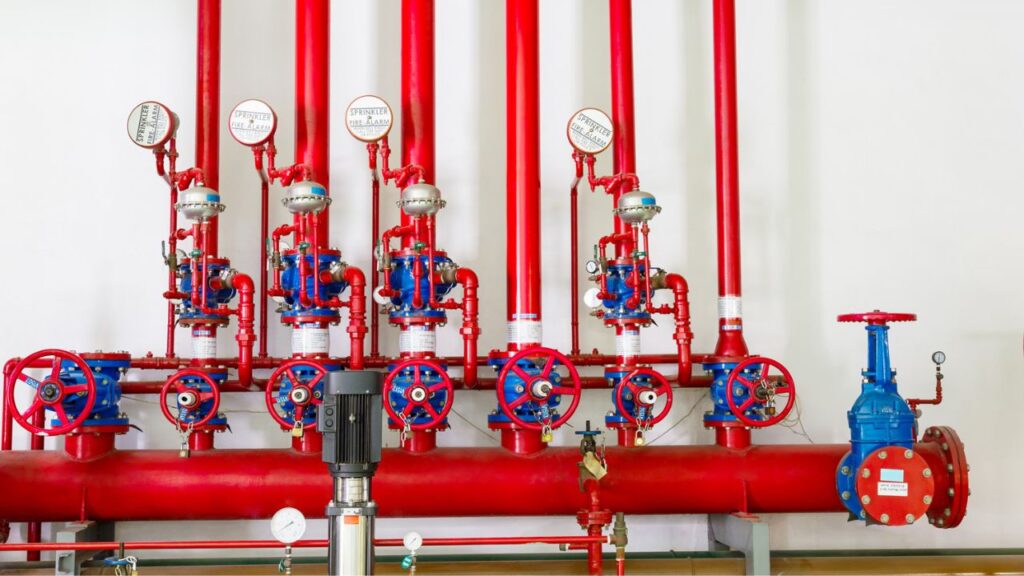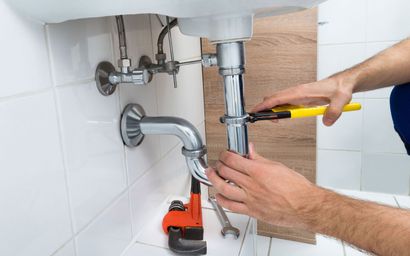Everything You Need to Know to Your Property's Plumbing System Anatomy
Everything You Need to Know to Your Property's Plumbing System Anatomy
Blog Article
Right here underneath you can discover some professional news pertaining to Anatomy of a House: Understanding the Components.

Recognizing exactly how your home's pipes system works is necessary for every single property owner. From providing tidy water for drinking, cooking, and showering to safely eliminating wastewater, a properly maintained plumbing system is essential for your household's health and wellness and convenience. In this comprehensive guide, we'll check out the complex network that comprises your home's pipes and deal tips on maintenance, upgrades, and managing usual concerns.
Introduction
Your home's plumbing system is more than just a network of pipelines; it's an intricate system that ensures you have access to clean water and effective wastewater elimination. Recognizing its parts and how they work together can help you prevent expensive repair services and make sure whatever runs smoothly.
Fundamental Elements of a Pipes System
Pipelines and Tubes
At the heart of your pipes system are the pipelines and tubing that carry water throughout your home. These can be made from numerous materials such as copper, PVC, or PEX, each with its advantages in terms of longevity and cost-effectiveness.
Fixtures: Sinks, Toilets, Showers, etc.
Fixtures like sinks, commodes, showers, and bath tubs are where water is used in your home. Comprehending just how these components connect to the plumbing system assists in detecting issues and intending upgrades.
Shutoffs and Shut-off Points
Valves control the flow of water in your plumbing system. Shut-off valves are important throughout emergencies or when you require to make fixings, permitting you to separate parts of the system without disrupting water flow to the entire home.
Water System System
Main Water Line
The primary water line links your home to the local water system or a personal well. It's where water enters your home and is dispersed to different components.
Water Meter and Stress Regulatory Authority
The water meter actions your water use, while a stress regulatory authority makes certain that water moves at a secure stress throughout your home's pipes system, protecting against damages to pipelines and fixtures.
Cold Water vs. Hot Water Lines
Comprehending the distinction between cold water lines, which supply water directly from the major, and warm water lines, which lug warmed water from the hot water heater, aids in fixing and planning for upgrades.
Drain System
Drain Pipes Pipeline and Traps
Drain pipelines lug wastewater away from sinks, showers, and bathrooms to the drain or sewage-disposal tank. Catches protect against sewage system gases from entering your home and additionally catch debris that could cause obstructions.
Air flow Pipes
Ventilation pipelines enable air into the drain system, preventing suction that might reduce drainage and trigger catches to vacant. Proper ventilation is vital for keeping the honesty of your pipes system.
Relevance of Proper Drainage
Guaranteeing appropriate water drainage protects against backups and water damage. Frequently cleansing drains pipes and keeping traps can prevent pricey repairs and extend the life of your plumbing system.
Water Heating Unit
Kinds Of Hot Water Heater
Hot water heater can be tankless or typical tank-style. Tankless heating systems heat water on demand, while tanks store heated water for immediate use.
How Water Heaters Connect to the Plumbing System
Understanding how water heaters connect to both the cold water supply and hot water distribution lines helps in diagnosing issues like insufficient hot water or leaks.
Maintenance Tips for Water Heaters
Routinely purging your hot water heater to get rid of debris, inspecting the temperature level settings, and examining for leaks can extend its lifespan and improve energy performance.
Usual Pipes Problems
Leaks and Their Causes
Leaks can occur as a result of maturing pipelines, loosened fittings, or high water pressure. Addressing leakages without delay avoids water damage and mold development.
Obstructions and Obstructions
Blockages in drains pipes and bathrooms are typically caused by flushing non-flushable things or an accumulation of grease and hair. Using drainpipe displays and being mindful of what goes down your drains pipes can protect against blockages.
Signs of Plumbing Troubles to Look For
Low water stress, slow-moving drains, foul odors, or unusually high water costs are indications of potential pipes troubles that ought to be attended to promptly.
Pipes Maintenance Tips
Regular Examinations and Checks
Arrange annual pipes evaluations to catch concerns early. Search for signs of leakages, corrosion, or mineral build-up in faucets and showerheads.
Do It Yourself Maintenance Tasks
Easy jobs like cleansing tap aerators, looking for commode leaks using dye tablet computers, or insulating exposed pipelines in cold environments can avoid major pipes problems.
When to Call a Professional Plumbing Technician
Know when a pipes issue calls for professional experience. Attempting intricate repair work without correct understanding can lead to more damages and higher fixing costs.
Upgrading Your Pipes System
Factors for Updating
Upgrading to water-efficient components or replacing old pipelines can improve water high quality, reduce water expenses, and raise the value of your home.
Modern Pipes Technologies and Their Benefits
Check out modern technologies like smart leak detectors, water-saving commodes, and energy-efficient hot water heater that can save cash and decrease ecological effect.
Cost Factors To Consider and ROI
Calculate the ahead of time prices versus long-lasting financial savings when thinking about plumbing upgrades. Lots of upgrades pay for themselves with reduced energy bills and fewer fixings.
Environmental Influence and Preservation
Water-Saving Fixtures and Devices
Installing low-flow taps, showerheads, and toilets can substantially reduce water usage without giving up performance.
Tips for Lowering Water Usage
Basic habits like taking care of leakages quickly, taking shorter showers, and running complete loads of laundry and recipes can conserve water and reduced your energy expenses.
Eco-Friendly Pipes Options
Take into consideration sustainable plumbing materials like bamboo for flooring, which is durable and environment-friendly, or recycled glass for counter tops.
Emergency situation Readiness
Actions to Take Throughout a Plumbing Emergency
Know where your shut-off valves are located and exactly how to shut off the water system in case of a ruptured pipeline or significant leakage.
Importance of Having Emergency Situation Calls Convenient
Maintain contact info for regional plumbing professionals or emergency situation solutions conveniently offered for fast feedback throughout a plumbing crisis.
Do It Yourself Emergency Situation Fixes (When Suitable).
Short-term fixes like making use of air duct tape to patch a dripping pipeline or placing a bucket under a trickling faucet can decrease damages up until a specialist plumbing technician arrives.
Final thought.
Understanding the makeup of your home's plumbing system encourages you to maintain it properly, conserving time and money on fixings. By complying with normal maintenance regimens and staying educated about modern-day plumbing innovations, you can ensure your plumbing system runs efficiently for several years ahead.
HOW YOUR PLUMBING SYSTEM WORKS
Which Pipes Do What?
Blue lines = fresh water supply entering the building
Red lines = hot water supply entering the building
Grey lines = pipes carrying waste away from the building and venting pipes carrying gases away from the building (through the roof)
YOUR MAIN PLUMBING SYSTEMS
There are two main plumbing systems that support your home s basic plumbing needs one that brings clean water into your home, and one that sends dirty water away from your home. Connected to the toilet, bath, shower, and other faucets in your home, these two systems keep your water flowing in the right directions.
ACCESSING FRESH WATER
Fresh and clean water is brought into your home through the main water supply line . Filtered through one pipe, this water is pressured to flow into the various fixtures in your home at any given time.
This water can be sourced from a well located on your property, a pond or river (mostly cottages), or, as in most cases, from the city s municipal water treatment centre. However, it is important to note that water that is untreated, such as the water siphoned from ponds or rivers, may not be safe to drink. Personal water supplies always need to be treated for hardness and contaminants before consumed.
MUNICIPAL WATER SUPPLIES
Improve taste and odour
Remove sediment
Eliminate hardness
Reduce chlorine
COLD WATER SUPPLY VS. HOT WATER SUPPLY
Cold water flows into your home or building through the service line, which then distributes hot or cold water to your fixtures. This line is most commonly run through a central column that runs floor to floor. Hot water runs in short and straight pipes as the longer the pipeline, the more heat that will be lost in the transfer. Having shorter pipes also allows residents to access hot water more quickly.
WASTE WATER SYSTEM
Your wastewater system is divided into two parts pipes that send wastewater away from your home and venting pipes that send sewer gas away from your home. Sewage water travels through pipes that flush the water and waste towards local sewers that are operated and managed by your city or town. Most sewer systems rely on gravity to move the wastewater to where it needs to go.
The further away from your toilet or sink, the larger wastewater pipes become. This allows for waste to be disposed of from various parts of your home or business at once without pipe blockages. The angle and flow of these pipes are also essential for keeping your waste pipes clear of build up.
https://harrisplumbing.ca/how-your-home-plumbing-system-works/

HOW YOUR PLUMBING SYSTEM WORKS
Which Pipes Do What?
YOUR MAIN PLUMBING SYSTEMS
There are two main plumbing systems that support your home s basic plumbing needs one that brings clean water into your home, and one that sends dirty water away from your home. Connected to the toilet, bath, shower, and other faucets in your home, these two systems keep your water flowing in the right directions.
ACCESSING FRESH WATER
Fresh and clean water is brought into your home through the main water supply line . Filtered through one pipe, this water is pressured to flow into the various fixtures in your home at any given time.
This water can be sourced from a well located on your property, a pond or river (mostly cottages), or, as in most cases, from the city s municipal water treatment centre. However, it is important to note that water that is untreated, such as the water siphoned from ponds or rivers, may not be safe to drink. Personal water supplies always need to be treated for hardness and contaminants before consumed.
MUNICIPAL WATER SUPPLIES
COLD WATER SUPPLY VS. HOT WATER SUPPLY
Cold water flows into your home or building through the service line, which then distributes hot or cold water to your fixtures. This line is most commonly run through a central column that runs floor to floor. Hot water runs in short and straight pipes as the longer the pipeline, the more heat that will be lost in the transfer. Having shorter pipes also allows residents to access hot water more quickly.
WASTE WATER SYSTEM
Your wastewater system is divided into two parts pipes that send wastewater away from your home and venting pipes that send sewer gas away from your home. Sewage water travels through pipes that flush the water and waste towards local sewers that are operated and managed by your city or town. Most sewer systems rely on gravity to move the wastewater to where it needs to go.
The further away from your toilet or sink, the larger wastewater pipes become. This allows for waste to be disposed of from various parts of your home or business at once without pipe blockages. The angle and flow of these pipes are also essential for keeping your waste pipes clear of build up.
https://harrisplumbing.ca/how-your-home-plumbing-system-works/
As a person who reads on Plumbing Installation 101: All You Need to Know, I assumed sharing that piece of content was beneficial. Sharing is good. Helping others is fun. I take joy in your readership.
Book Instantly Report this page